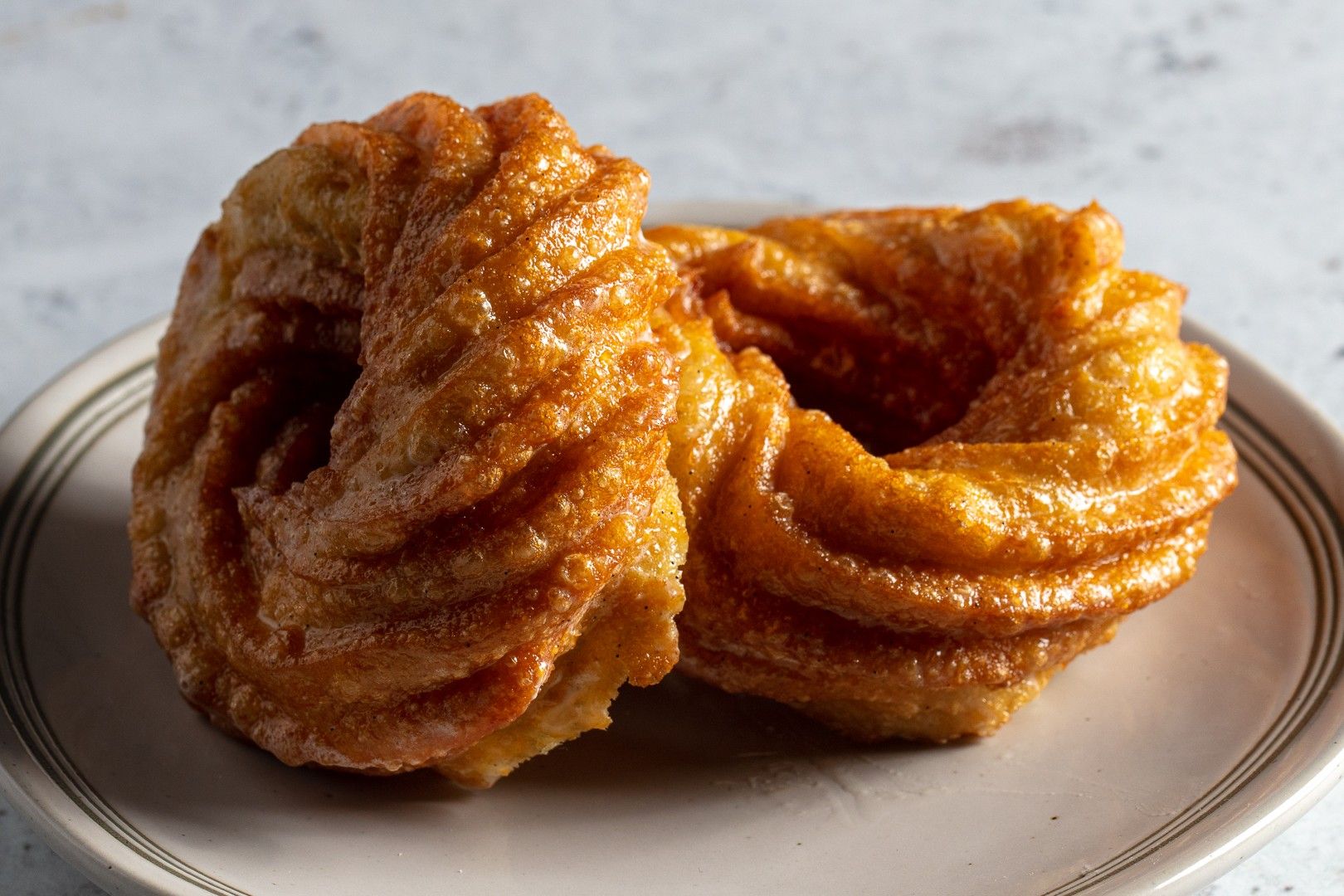
Crullers are a delicious treat enjoyed by many, but how much do you really know about them? These twisted pastries have a rich history and come in various forms across different cultures. From their origins in Europe to their popularity in North America, crullers have a fascinating journey. Did you know that crullers can be made from different types of dough, including choux and yeast? Crullers are often compared to donuts, but they have their own unique texture and flavor. Whether you prefer them glazed, powdered, or plain, there's no denying the charm of these delightful pastries. Ready to learn more? Here are 36 facts about crullers that will make you appreciate them even more!
What is a Cruller?
Crullers are a type of pastry that has captured the hearts of many with their unique texture and delightful taste. These twisted, fried dough treats come in various forms and flavors, making them a favorite among pastry lovers.
- The word "cruller" comes from the Dutch word "krullen," which means "to curl."
- Crullers are often twisted into a braided or twisted shape before frying.
- They are typically made from a dough similar to that used for doughnuts.
- Crullers can be found in many countries, each with its own variation.
- In the United States, crullers are often associated with New England and the Midwest.
Different Types of Crullers
Crullers come in various shapes and sizes, each with its own unique characteristics. Let's explore some of the most popular types of crullers.
- French crullers are made from choux pastry, which gives them a light and airy texture.
- German crullers, known as "Spritzkuchen," are often ring-shaped and have a denser texture.
- In Canada, crullers are sometimes referred to as "honey crullers" due to their sweet glaze.
- Polish crullers, called "chrust," are thin and crispy, often dusted with powdered sugar.
- Scandinavian crullers, known as "klenäter," are twisted and fried, then sprinkled with sugar.
Historical Background of Crullers
Crullers have a rich history that dates back centuries. Understanding their origins can give us a deeper appreciation for these delicious pastries.
- Crullers were brought to America by Dutch settlers in the 17th century.
- They were originally made as a way to use up leftover dough.
- In the 19th century, crullers became popular in American cookbooks.
- Crullers were often served at special occasions and holidays.
- During World War II, crullers were a popular treat for soldiers.
How Crullers are Made
Making crullers involves a few key steps that ensure they turn out perfectly every time. Here's a look at the process.
- The dough is typically made from flour, eggs, sugar, and butter.
- For French crullers, the dough is piped into rings before frying.
- The dough is often chilled before shaping to make it easier to handle.
- Crullers are fried in hot oil until golden brown.
- After frying, crullers are often glazed or dusted with sugar.
Fun Facts About Crullers
Crullers have some interesting trivia associated with them. These fun facts might surprise you!
- Crullers were once considered a symbol of good luck in some cultures.
- In some regions, crullers are enjoyed with a cup of coffee for breakfast.
- Crullers can be made in both sweet and savory versions.
- Some bakeries offer crullers filled with cream or fruit preserves.
- Crullers are often featured in food festivals and fairs.
Crullers in Popular Culture
Crullers have made their way into various aspects of popular culture, from literature to television. Here are some notable mentions.
- Crullers are mentioned in several classic American novels.
- They have appeared in episodes of popular TV shows.
- Some famous chefs have created their own unique cruller recipes.
- Crullers are often featured in cooking competitions.
- They have been the subject of numerous food blogs and articles.
Health and Nutrition
While crullers are a delicious treat, it's important to enjoy them in moderation. Here's a look at their nutritional content.
- Crullers are high in calories due to their fried nature.
- They contain a significant amount of sugar and fat.
- Some crullers are made with whole wheat flour for a slightly healthier option.
- Baked crullers are available as a lower-calorie alternative.
- It's best to enjoy crullers as an occasional treat rather than a daily indulgence.
Cruller Recipes to Try at Home
If you're feeling adventurous, why not try making crullers at home? Here are some tips to get you started.
- Start with a basic dough recipe and experiment with different shapes and flavors.
Crullers: A Sweet Ending
Crullers have a rich history and a unique place in the world of pastries. From their origins in Europe to their popularity in North America, these twisted treats have captured the hearts of many. Whether you prefer the French cruller with its light, airy texture or the denser, cake-like version, there's no denying their appeal.
Crullers aren't just delicious; they're also versatile. They can be enjoyed plain, glazed, or even filled with cream. Their unique shape and texture make them a standout in any bakery display.
Next time you're in the mood for something sweet, consider reaching for a cruller. With their delightful taste and fascinating history, they offer more than just a quick snack. They provide a bite of tradition and a taste of something special. Enjoying a cruller is like taking a small, delicious trip through time.
Was this page helpful?
Our commitment to delivering trustworthy and engaging content is at the heart of what we do. Each fact on our site is contributed by real users like you, bringing a wealth of diverse insights and information. To ensure the highest standards of accuracy and reliability, our dedicated editors meticulously review each submission. This process guarantees that the facts we share are not only fascinating but also credible. Trust in our commitment to quality and authenticity as you explore and learn with us.
